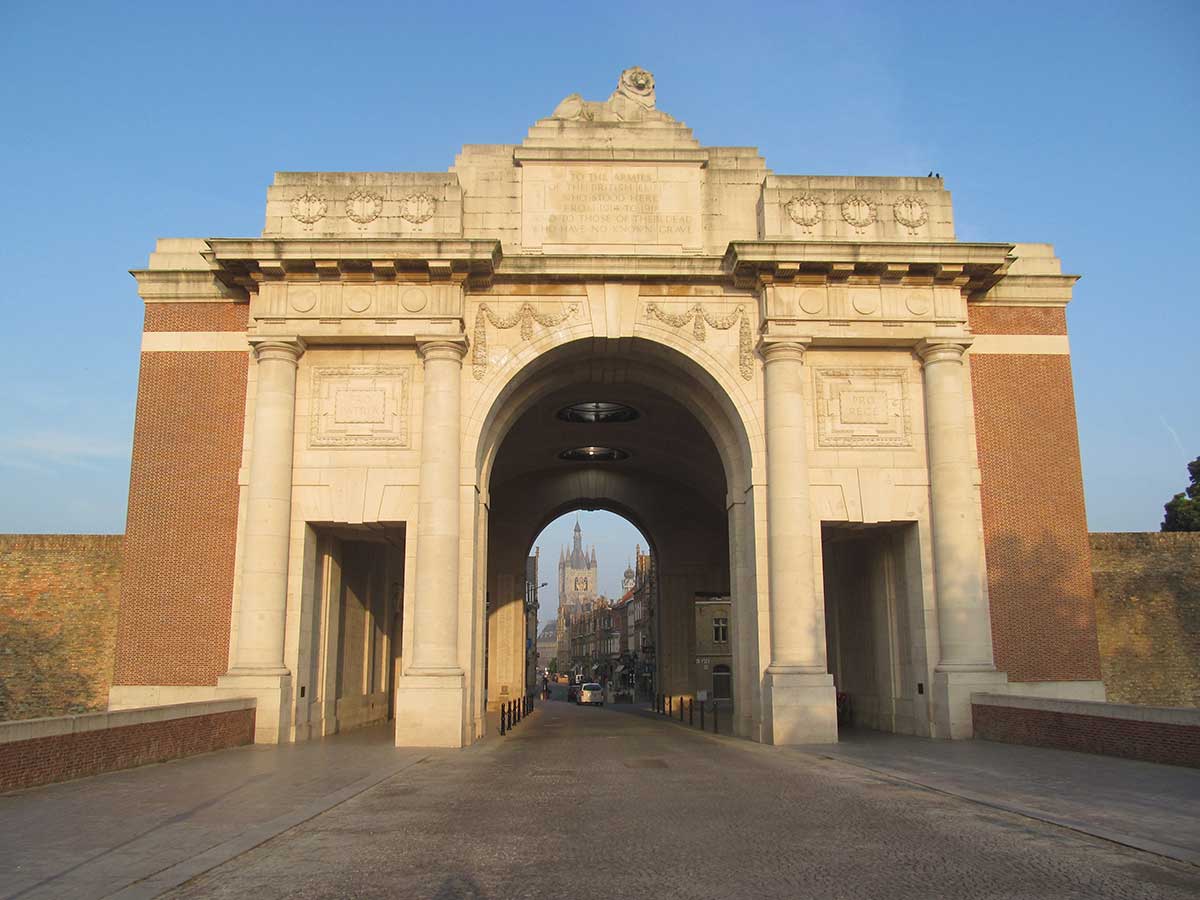Menin Gate
When the Germans launched the great spring offensives of 1918, their forces were finally halted less than two and a half kilometres from the Menin Gate at Ypres.
After the war, this 17th century gate in the eastern ramparts of Ypres was chosen as the site of a Memorial Arch. The Arch would commemorate, by name, nearly 55,000 dead of the armies of the British Commonwealth who fell in Belgium, most of them in the Ypres Salient, but whose final resting-place was known only to God. Of these, 6,940 are Canadians.
The Memorial, which was designed by Sir Reginald Blomfield, and erected by the Imperial (now the Commonwealth) War Graves Commission, consists of a "Hall of Memory", 36.6 metres long by 20.1 metres wide. In the centre are broad staircases leading to the ramparts, which overlook the moat, and to pillared loggias which run the whole length of the structure. On the inner walls of the Hall, on the sides of the staircases and on the walls of the loggias, panels of Portland stone bear the names of the dead, inscribed by regiment and corps.
Carved in stone above the central arch, through which the Menin road emerges from Ypres to cross a moat by a causeway, are the words:
TO THE ARMIES OF THE BRITISH EMPIRE WHO STOOD HERE FROM 1914 TO 1918 AND TO THOSE OF THEIR DEAD WHO HAVE NO KNOWN GRAVE
Over the two staircases leading from the main Hall is the inscription:
HERE ARE RECORDED NAMES OF OFFICERS AND MEN WHO FELL IN YPRES SALIENT BUT TO WHOM THE FORTUNE OF WAR DENIED THE KNOWN AND HONOURED BURIAL GIVEN TO THEIR COMRADES IN DEATH
The dead are remembered to this day in a simple ceremony that takes place every evening at sunset. All traffic through the gateway in either direction is halted, and two buglers (on special occasions four) move to the centre of the Hall and sound the Last Post. This is a volunteer operation, neither arranged nor supported financially by any government. The tribute is the responsibility of the Ypres Last Post Committee, a voluntary organization founded in 1928. The cost of the operation, of necessity kept to a minimum, is defrayed from the income of an endowment fund established at that time; and to supplement this, a fund has been started in Vancouver. Two silver trumpets for use in the ceremony are a gift to the Ypres Last Post Committee by an officer of the Royal Canadian Artillery, who served with the 10th Battery, of St. Catharines, Ontario, in Ypres in April 1915.
Directions
- Date modified:
